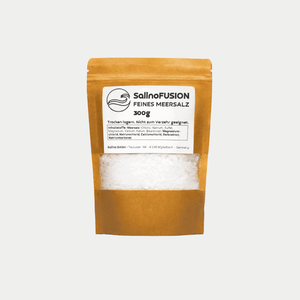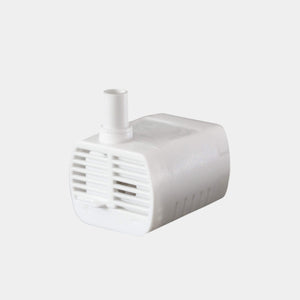Breaths like a day at the sea

Anyone who has ever stood at a graduation tower in Lower Saxony knows this special feeling: A cool, salty breath hangs in the air, your chest expands, and for a moment, everyday life seems far away. Whether in Bad Rothenfelde, Bad Salzdetfurth, or Lüneburg - graduation towers throughout the state characterize places where history, health, and landscape converge. They remind us that Lower Saxony is not just a land of heaths, coasts, and cities, but also a region where "white gold" has influenced life and culture for centuries.
But salt air is more than a relic of bygone times. In spa gardens from Hanover to the Lüneburg Heath, the mighty wooden structures are vibrant places of power, attracting visitors seeking tranquility or relief for their respiratory problems. Yet, even here, a contradiction emerges: Regular visits to the graduation towers cost time, travel costs, and entrance fees – quickly adding up to a considerable sum. It's precisely at this point that many wonder whether there isn't a way to permanently incorporate the experience into their daily lives.
Below, we travel to five of the most impressive graduation towers in Lower Saxony, which demonstrate how diverse and vibrant the state's salt history has remained - places that must be experienced if you want to understand why salt air is far more than just a hint of the sea inland.
Bad Rothenfelde - Salt air between brine springs and spa park
Bad Rothenfelde is home to one of the largest graduation towers in Europe. Two monumental walls of blackthorn vine crisscross the town, over 400 meters long and up to 10 meters high. Even from afar, you can see the water trickling in fine streams over the dark branches, while a fine haze of salt spreads through the air.
Walkers report that their breathing feels deeper and freer here, as if they had the North Sea right on their doorstep. A visit in spring is especially impressive, when the first warm rays of sunshine bathe the salty mist in a shimmering light. For many, the graduation tower is not only a place of relaxation, but also a landmark of the region, demonstrating the importance of salt production in the Osnabrück region to this day.
The history of the brine springs in Bad Rothenfelde dates back to the 19th century. It was then that the saline springs were discovered, transforming the town into an important spa. Today, the graduation tower is the heart of the spa town and is used intensively – by locals for their daily strolls as well as by spa guests from all over Germany.
The two graduation walls are connected by the spa park, allowing visitors to take a leisurely stroll. Benches invite visitors to linger, and many take the opportunity to read a book or simply listen to the steady trickle of the brine. The graduation tower is freely accessible and operates year-round—an important feature for anyone who wants to regularly benefit from the salt air.
Bad Salzdetfurth - spa history in the Leine Valley
Bad Salzdetfurth also bears salt in its name – and in the heart of the town stands an impressive graduation tower, an integral part of the spa tradition since the 18th century. Nestled in a well-kept park, the complex exudes tranquility and stability.
Visitors relax on the surrounding benches, read, or listen to the steady dripping of the brine, which acts like a natural rhythm. The salty air not only has a soothing effect on the respiratory system, but also creates an atmosphere that many describe as relaxing and healing.
With its proximity to Hildesheim and Hanover, Bad Salzdetfurth is a popular destination for day visitors who appreciate the balance between historical scenery and modern health culture. The spa gardens are lovingly landscaped, with ancient trees, flowerbeds, and hiking trails winding through the green landscape.
The graduation tower itself is an architectural gem. The dark blackthorn walls, coated with white salt crystals, form a striking contrast to the green lawns. Especially in the evening, when the setting sun bathes the complex in warm light, the graduation tower unfolds an almost magical atmosphere.
Bad Salzdetfurth has retained its character as a quiet spa town. Unlike larger cities, life here is more leisurely, something many visitors appreciate. The combination of nature, health, and relaxation makes the town an ideal destination for anyone seeking to escape the stresses of everyday life.
Bad Essen - Salt air in the Wiehen Mountains
In the spa town of Bad Essen, on the edge of the Wiehen Hills, stands a graduation tower that impresses visitors at first glance. Over 100 meters long and clad in dark blackthorn, it rises like a wall of living water in the saltwater arena. Here, the brine from the Jordansprudel spring hits the fine wooden mesh and disperses into an aerosol that fills the air with a fresh, almost maritime aroma.
Especially on warm summer days, a fine mist forms, draping itself like a cooling veil over your skin and breath. Many people use the graduation tower as a daily stopover, while others combine their visit with a stroll through the historic town center of Bad Essen. This transforms the stay into a ritual combining culture, nature, and health.
Bad Essen is idyllically situated between Osnabrück and Minden and is easily accessible by car or train. The spa town has earned a reputation as a health resort over the decades, and the saltwater pool with its graduation tower is a central part of this profile.
The Jordansprudel spring, from which the brine is sourced, is highly mineralized and particularly effective. Visitors often report noticeable relief from respiratory problems after just a few visits. Bad Essen has become a popular destination, especially for people with chronic illnesses such as asthma or COPD.
The graduation tower is integrated into the saltwater arena, which also offers recreational activities such as mini golf and dining. This makes the visit a memorable experience for the whole family – health and entertainment go hand in hand here.
Lüneburg - Salt town with historical heritage
Lüneburg is widely known as a Hanseatic city and salt metropolis. Even in the Middle Ages, "white gold" was the foundation of its prosperity. Today, the graduation tower in the spa gardens commemorates this history—a facility that combines tradition and modernity.
The brine comes from the old salt springs and is channeled over the wooden walls, while the mist makes the air noticeably heavier. Those who breathe here sense how closely Lüneburg's identity is intertwined with salt. Visitors often describe the atmosphere as "earthy and maritime at the same time" – an impression that is particularly intense in the evening, when the graduation tower is bathed in warm light and the park falls into tranquility.
The history of salt mining in Lüneburg is unique in Germany. For over 1,000 years, salt was mined here and transported along the Salt Road to Scandinavia. This salt made Lüneburg one of the richest cities of the Middle Ages. The magnificent gabled houses and the historic saltworks still bear witness to this prosperity today.
The modern graduation tower continues this tradition and brings it to life for today's visitors. It is located in the spa gardens, which also house a thermal bath and various wellness facilities. Many visitors combine their stay at the graduation tower with a stroll through the historic old town or a visit to the German Salt Museum.
Lüneburg is only about 50 kilometers from Hamburg, making it a popular destination for city dwellers looking to escape the hustle and bustle of the city for a day. The combination of culture, history, and health makes Lüneburg a versatile destination.
Bad Rothenfelde (second facility) - Double the power of salt air
Bad Rothenfelde boasts not one, but two large graduation towers, which together extend over 400 meters in length. These two walls are strategically located in the spa park, allowing visitors to choose the optimal location depending on the wind direction and the position of the sun.
The second facility is located somewhat off the main paths, offering more peace and quiet for those who wish to enjoy the salt air in meditative silence. There are fewer visitors here, and the atmosphere is even more concentrated. Some regulars deliberately prefer this quieter corner of the spa park.
The two graduation towers are connected by a circular path, signposted as the "Saltwater Circular Path." This path runs through the entire spa park and allows visitors to experience both facilities in one walk. For an intensive salt air treatment, experts recommend spending 30-60 minutes daily near the graduation towers—a walk along the saltwater circular path perfectly fulfills this recommendation.
Conclusion: Salt air between spa park and everyday life

The graduation towers in Lower Saxony tell a story deeply interwoven with the landscape and culture. From the monumental structures in Bad Rothenfelde to the traditional salt walls in Lüneburg and the sites in Bad Salzdetfurth and Bad Essen, they demonstrate that salt air is far more than a medical aid. They are places of encounter, tranquility, and remembrance – small windows to the sea, right inland.
Bad Rothenfelde impresses with its two massive graduation walls, which together form one of the largest ensembles in Europe. Lüneburg combines salt history with Hanseatic tradition, demonstrating how much salt has shaped an entire city. Bad Salzdetfurth offers a tranquil spa atmosphere in the Leine Valley, while Bad Essen, with its Salt Arena, combines modern health and leisure activities.
Anyone who regularly seeks the soothing effects quickly realizes that visits to spas add up. Entrance fees for thermal baths, travel costs, and the time invested add up to a sum at the end of the year that surprises many. It's about 50 kilometers from Hanover to Bad Rothenfelde, and about 130 kilometers to Lüneburg. With multiple visits per week, travel costs add up considerably.
The alternative for everyday life
This is precisely where the idea of bringing salt air into everyday life, regardless of your next excursion, is growing. A mini-saltworks makes this possible. It operates on the same principle as large graduation towers, only on a smaller scale: quiet, efficient, and available at all times.
Compared to repeated trips, the initial investment often pays for itself in a short time. For twice-weekly visits to a thermal spa, with an average entrance fee of €12, the monthly cost is approximately €96, or approximately €1,150 annually—plus travel expenses of several hundred euros.
This transforms the special experience in the spa gardens into a daily ritual at home – without long journeys, but with the same calming effect on the respiratory system and well-being. The large graduation towers in Bad Rothenfelde or Lüneburg remain special places for conscious time-outs, while the home-based solution ensures daily nourishment.
Lower Saxony's graduation towers will continue to attract visitors. They are historical monuments, architectural gems, and places of encounter. But for everyday life, for daily respiratory care, and for integrating salt air into a holistic health concept, a local mini-saltworks can be the ideal complement.
(Image source: Adobe Stock)



